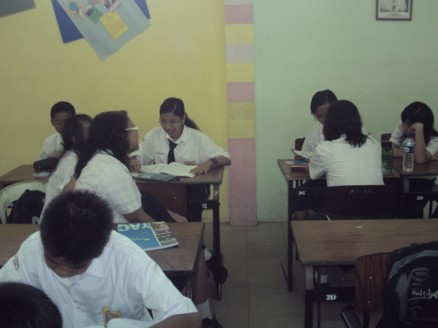WHERE WILL THE POLAR BEARS GO?
Splash! A polar bear jumps off a cracking ice floe and swims to another nearby. Crack! This ice floe breaks also, making him crash into the water once again. Steam and water droplets blow from the polar bear’s nose as he lifts his big white head out of the icy water.
He swims on to three other floating ice masses before he finds a solid one large enough to support his massive weight. Eventually, however, he will be forced inland like so many other bears because of melting ice.
By comparison, this bear is lucky. Polar bears, typically strong swimmers, are drowning in increasing numbers because more and more are being stranded out at sea. The sea ice cover of the Arctic, the polar bears’ natural and only habitat, is shrinking.
Warmer temperatures are causing the ice to melt unusually early in the season and in greater proportions. The Canadian Wildlife Service reports that the average winter temperatures in the Canadian Arctic have increased three to four degrees over the last 50 years.
In the Hudson Bay, ice is melting an average of two and a half weeks earlier than in the mid-1970s, which many scientists believe is due to global warming. Polar bears in this region rely on the ice coverage in the winter and spring in order to hunt ringed seals, which are further out to sea.
The shrinking ice cover significantly shortens the bears’ hunting season. During this time they must build up their fat stores to survive their nomadic hibernation through the long winter. Studies have shown that the bears are now coming to shore, on average, 15 percent lighter than they were 20 years ago. In addition, the Hudson Bay polar bear population has decreased by 22 percent, from 1,194 to 935, since 1987.
In Alaska, the summer thaw of 2004 was much more drastic, with the ice retreating in some areas as much as 200 miles. This left polar bears stranded out in the open ocean. Many drowned while trying to make it back to land. Though strong swimmers that can often swim 60 or even 100 miles at a time, they can’t swim 200 miles.
What is to become of the polar bear? Sadly, there is no other suitable habitat for them. If the polar ice cap melts, polar bears may indeed face extinction. Scientists and conservationists are duly concerned. Several conservation groups filed a petition in 2006 with the U.S. Fish and Wildlife Service to list the polar bear as a threatened species under the Endangered Species Act (ESA).
Protection under the ESA means that at least the bear’s habitat in the United States is protected from human activities like oil and gas development. This may not stop the melting of their ice habitat, but it will certainly bring awareness to their plight, and is a step in the right direction.
Global Warming: More Information
Carbon dioxide and other naturally occurring gases help to keep our planet warm and habitable. But too much of a good thing can sometimes be a bad thing. Specifically, increases in carbon dioxide from coal, auto emissions, factories, and other sources of pollution have created a much heavier layer in the earth’s atmosphere than we need. The result is that the sun’s ultraviolet rays can enter, but cannot be reflected back into space. This heavy “blanket” warms the air, water, and land below, melting the polar ice sheets in the Arctic and other glaciers around the world.
When more water and land become exposed, the earth absorbs more heat. Radiation from the sun that was once reflected back into space by glaciers and sea ice is now being absorbed by the newly exposed dark surfaces of the land and ocean.
This warming trend is impacting the entire planet. One Greenland glacier is melting at a rate of 9 miles per year. That’s enough water to fill Lake Erie, the tenth largest lake in the world, each year! In Siberia, a 386,000-square-mile expanse of permafrost that has been frozen for an estimated 11,000 years is now thawing. Permafrost is essentially a frozen peat bog, which is made up of dead and decayed plants. The melting of the bog is significant because peat generates methane, a greenhouse gas that is 20 times more potent than carbon dioxide.
Also impacted are plant, insect, and animal populations. In Southern California, the beetle population exploded in 2005, the hottest year on record. This population boom led to the death of hundreds of evergreen trees, which in turn provided hundreds of acres of fuel for the devastating wildfires that year.
Each of these examples taken by themselves is startling. Taken together, with all other environmental impacts not mentioned here, the idea of global warming can be downright alarming. However, there are actions we can all take to help minimize our individual impact on the earth’s surface.
skip to main |
skip to sidebar





THE HOST

My Sites :
"TEACHING? WHAT A ....!"
Teaching, for me, is not just a job. It's a kind of art or something artistic, ...and challenging, of course. After some years I've been dealing with students, and all of their various behavior, I can finally say that this profession is better than "politician". To make anyone else understand about something new and useful for his future is what I have been thinking as a precious idea, more satisfying than earning money from political constellation.
I want to share my short and limited experience in teaching with all teachers or teacher-wanna-be, especially English teachers through this blog.
I want to share my short and limited experience in teaching with all teachers or teacher-wanna-be, especially English teachers through this blog.

A group-work is not merely an activity of working together to do the task given.

One of class activities at Children Class

